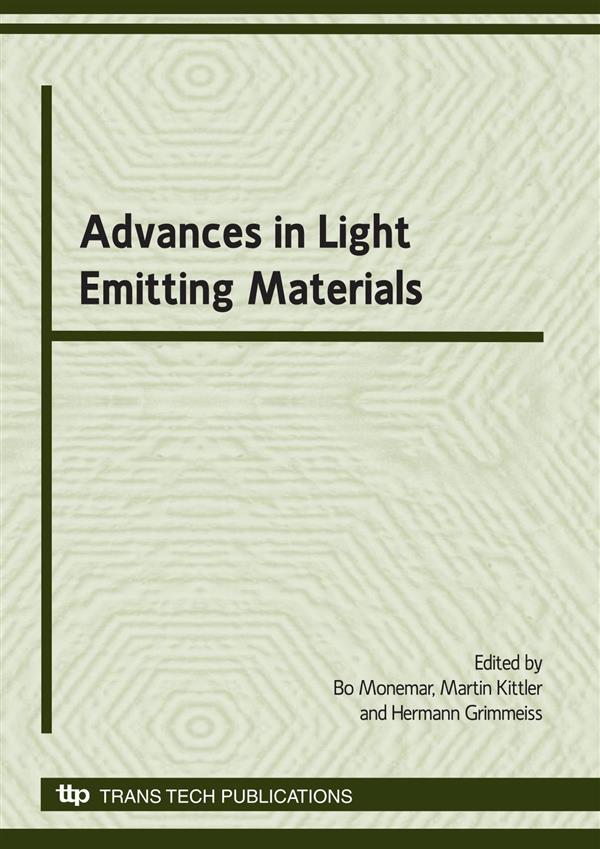Engineering Research
Materials Science
Engineering Series
Advances in Light Emitting Materials
Description:
This special-topic volume‚ Advances in Light-Emitting Materials’, makes an important contribution to the field of silicon and III-nitride semiconductors. It begins with a brief history of visible-light emitting diodes. However, silicon is currently expanding from micro-electronics and into photonics. Due to its unsuitable band-gap, it has not previously been the material-of-choice for opto-electronic integration. That is now beginning to change and silicon devices have been developed which have the capability to emit, modulate, guide and detect light and which can be combined with microelectronics to form electronic and photonic integrated circuits.
Purchase this book:
Info:
Review from Ringgold Inc., ProtoView:
Designed for engineers and researchers in the field of silicon and III-nitride semiconductors, this collection of research papers covers the rapid advances made over the last few years in the development and performance of silicon-based light- emitters. Editors Monemar (materials science, Linköping U., Sweden), Kittler (defect engineering, Joint Lab BTU-IHP, Germany) and Grimmeiss (solid state physics, U. of Lund, Sweden) have assembled this research to show how silicon research has expanded from microelectronics to photonics in recent years. These papers describe such developments as the potential value of D-band luminescence through silicon dislocations, silicon-germanium LEDs and MOS light-emitting devices based upon rare-earth ion implantation.

